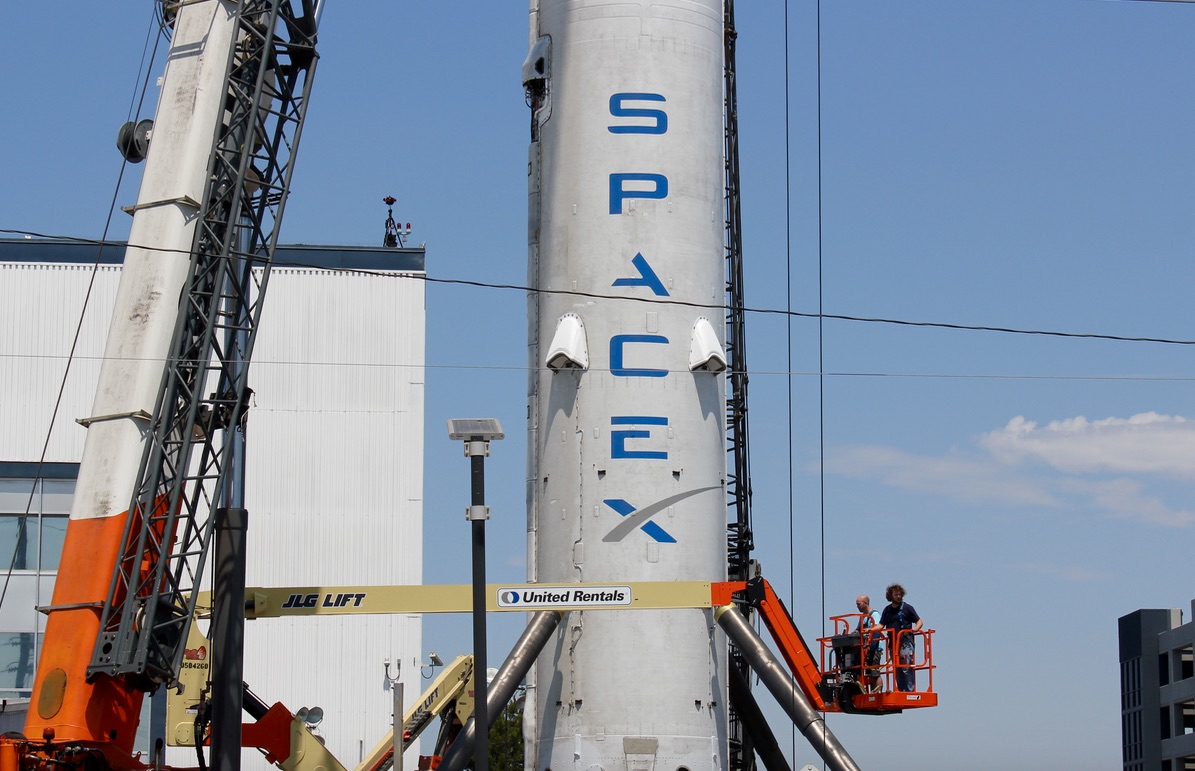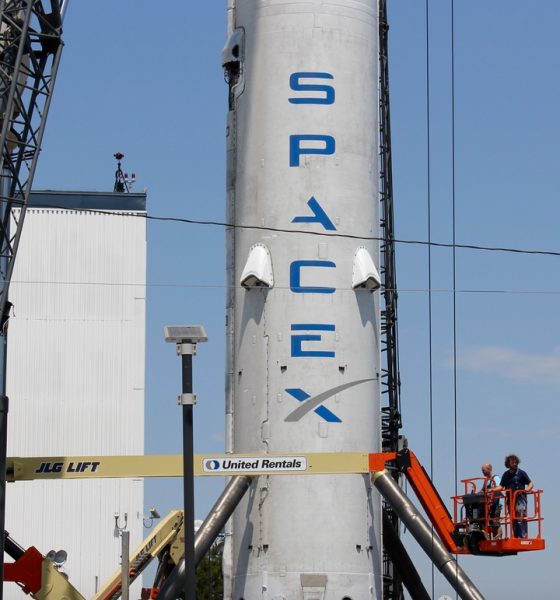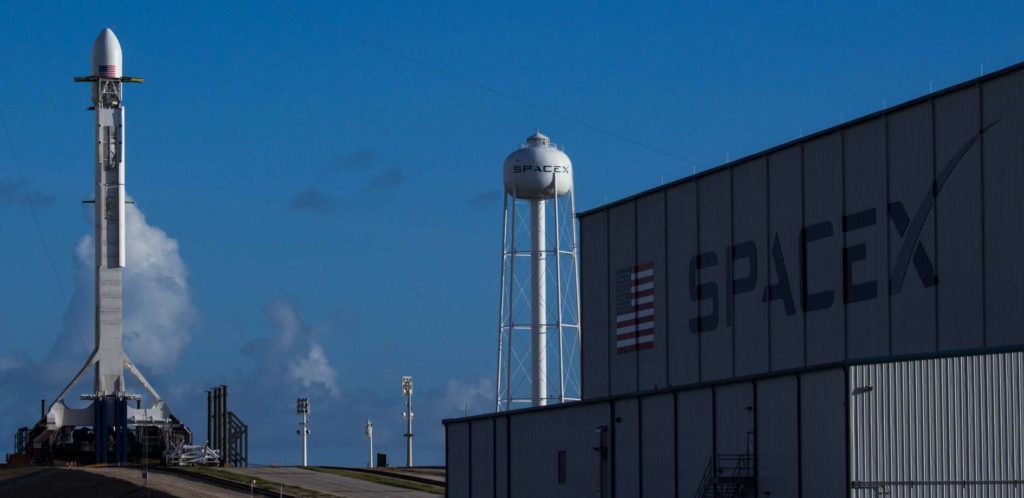

News
NASA & US Air Force consider SpaceX’s reusable rockets for future missions
Three of SpaceX’s largest and most important customers have in some way expressed significant interest in flying missions aboard recovered SpaceX Falcon 9 rockets. Even with respect to the three commercial reuses SpaceX has already accomplished this year, the combined interest of NASA, the US Air Force, and Iridium could well mark a major phase change in the space industry.
NASA
According to NASASpaceflight.com, NASA has been exploring reused Falcon 9 hardware for CRS-13, a cargo Dragon mission scheduled for no earlier than December 4th. If NASA finalizes approvals in time, CRS-13 could see SpaceX reuse both the Falcon 9 first stage and the Dragon spacecraft atop it, in many ways reminiscent of SpaceX’s ultimate goal of full reusability. Furthermore, for CRS-13, NASA is focused on launching aboard the same Falcon 9 that flew CRS-11 just four months ago, a pleasant synergy that would figuratively suggest the development of a fleet ownership-type attitude. NASA is by far SpaceX’s largest customer and has been an invaluable source of support and expertise for the company for nearly all of its 15 years of operations.

Falcon 9 1031 prepped and ready for its second flight and SpaceX’s third commercial reuse. (Tom Cross/Teslarati)
US Air Force
The week initially began with a Bloomberg interview of US Space Command head General Jay Ramond that can be best described as a resounding affirmation of the Air Force’s interest in reused SpaceX rockets. Never one for subtlety, Gen. Raymond was quoted saying that the USAF would be “absolutely foolish” and “dumb” to not consider flying on reused rockets. While reused hardware will need to be certified separately for Air Force missions, the Raymond suggested that the process of certifying the reusable Falcon 9 had already begun, although he was unable to provide a an estimate for when it might be completed. Ultimately, although the Air Force is laser-focused on reliability over all other traits, Raymond praised SpaceX for its role in introducing price-shrinking competition to the launch market and reiterated his “[complete] commitment to…reused rocket[s].”
Iridium Communications
Up next on the docket is Iridium, a satellite communications provider that contracted with SpaceX for the eight missions required to launch its next generation Iridium NEXT constellation. While CEO Matt Desch has openly expressed interest in reuse over the last year and a half, he remained skeptical and maintained that he was effectively waiting for a more amicable discount on reused vehicles before biting the bullet. SpaceX must have made an offer that couldn’t be refused, as Iridium Communications announced in a press release that the NEXT-4 and NEXT-5 missions will both fly atop reused Falcon 9 first stages, beginning with NEXT-4 on December 22nd.
Of crucial importance, Iridium also noted that the premiums paid to their launch insurers would not increase as a result of the adoption of reused hardware. While the change boosters means that the newly-completed Landing Zone at Vandenberg will have to wait until 2018 to host a Falcon 9 recovery, that is a small consolation to pay for yet another major customer warming up to SpaceX’s reusability program.

Falcon 9 1041 the night before its predawn liftoff for the Iridium NEXT-3 mission. (SpaceX)
Encore: Spacecom
Finally, in an unexpected and encouraging turn of events, Israeli communications satellite operator Spacecom announced on Wednesday that they had contracted with SpaceX for the 2019 and 2020 launches of the Amos-17 and Amos-8 communications satellites.
In early-September 2016, a Falcon 9 preparing to conduct a static fire suffered a catastrophic failure that destroyed vehicle, Spacecom’s Amos-6 payload, and extensively damaged Launch Complex 40. With SpaceX effectively at fault for the loss, they were contractually obligated to either return Spacecom’s $50m deposit or provide a second launch at no additional cost. Spacecom sided with the latter and further tripled down on SpaceX with a second launch order in 2020 and the decision to fly Amos-17 on a reused Falcon 9.
While one could dismiss the choice to exploit free reflight as a move begrudgingly forced by financial pragmatism, Spacecom’s Amos-8 launch order and decision to fly on reused hardware is undeniable evidence that the two companies have preserved their relationship in spite of the Amos-6 trials and tribulations.
Whoa. Spacecom not only going back to #SpaceX F9 for free re-flight of AMOS-6, but it looks like it will be on a flight-proven F9 to boot!
— Chris G (@ChrisG_SpX) October 18, 2017
All said and done, the fact that all four of these groundbreaking announcements occurred over the course of a handful of days is incredible. If the trope could ever be said to be applicable, it is hard to deny that SpaceX is likely on aerospace’s Cloud 9 this week.

Elon Musk
Elon Musk’s X will start using a Tesla-like software update strategy
The initiative seems designed to accelerate updates to the social media platform, while maintaining maximum transparency.

Elon Musk’s social media platform X will adopt a Tesla-esque approach to software updates for its algorithm.
The initiative seems designed to accelerate updates to the social media platform, while maintaining maximum transparency.
X’s updates to its updates
As per Musk in a post on X, the social media company will be making a new algorithm to determine what organic and advertising posts are recommended to users. These updates would then be repeated every four weeks.
“We will make the new 𝕏 algorithm, including all code used to determine what organic and advertising posts are recommended to users, open source in 7 days. This will be repeated every 4 weeks, with comprehensive developer notes, to help you understand what changed,” Musk wrote in his post.
The initiative somewhat mirrors Tesla’s over-the-air update model, where vehicle software is regularly refined and pushed to users with detailed release notes. This should allow users to better understand the details of X’s every update and foster a healthy feedback loop for the social media platform.
xAI and X
X, formerly Twitter, has been acquired by Elon Musk’s artificial intelligence startup, xAI last year. Since then, xAI has seen a rapid rise in valuation. Following the company’s the company’s upsized $20 billion Series E funding round, estimates now suggest that xAI is worth tens about $230 to $235 billion. That’s several times larger than Tesla when Elon Musk received his controversial 2018 CEO Performance Award.
As per xAI, the Series E funding round attracted a diverse group of investors, including Valor Equity Partners, Stepstone Group, Fidelity Management & Research Company, Qatar Investment Authority, MGX, and Baron Capital Group, among others. Strategic partners NVIDIA and Cisco Investments also continued support for building the world’s largest GPU clusters.
News
Tesla FSD Supervised wins MotorTrend’s Best Driver Assistance Award
The decision marks a notable reversal for the publication from prior years, with judges citing major real-world improvements that pushed Tesla’s latest FSD software ahead of every competing ADAS system.

Tesla’s Full Self-Driving (Supervised) system has been named the best driver-assistance technology on the market, earning top honors at the 2026 MotorTrend Best Tech Awards.
The decision marks a notable reversal for the publication from prior years, with judges citing major real-world improvements that pushed Tesla’s latest FSD software ahead of every competing ADAS system. And it wasn’t even close.
MotorTrend reverses course
MotorTrend awarded Tesla FSD (Supervised) its 2026 Best Tech Driver Assistance title after extensive testing of the latest v14 software. The publication acknowledged that it had previously criticized earlier versions of FSD for erratic behavior and near-miss incidents, ultimately favoring rivals such as GM’s Super Cruise in earlier evaluations.
According to MotorTrend, the newest iteration of FSD resolved many of those shortcomings. Testers said v14 showed far smoother behavior in complex urban scenarios, including unprotected left turns, traffic circles, emergency vehicles, and dense city streets. While the system still requires constant driver supervision, judges concluded that no other advanced driver-assistance system currently matches its breadth of capability.
Unlike rival systems that rely on combinations of cameras, radar, lidar, and mapped highways, Tesla’s FSD operates using a camera-only approach and is capable of driving on city streets, rural roads, and freeways. MotorTrend stated that pure utility, the ability to handle nearly all road types, ultimately separated FSD from competitors like Ford BlueCruise, GM Super Cruise, and BMW’s Highway Assistant.
High cost and high capability
MotorTrend also addressed FSD’s pricing, which remains significantly higher than rival systems. Tesla currently charges $8,000 for a one-time purchase or $99 per month for a subscription, compared with far lower upfront and subscription costs from other automakers. The publication noted that the premium is justified given FSD’s unmatched scope and continuous software evolution.
Safety remained a central focus of the evaluation. While testers reported collision-free operation over thousands of miles, they noted ongoing concerns around FSD’s configurable driving modes, including options that allow aggressive driving and speeds beyond posted limits. MotorTrend emphasized that, like all Level 2 systems, FSD still depends on a fully attentive human driver at all times.
Despite those caveats, the publication concluded that Tesla’s rapid software progress fundamentally reshaped the competitive landscape. For drivers seeking the most capable hands-on driver-assistance system available today, MotorTrend concluded Tesla FSD (Supervised) now stands alone at the top.
News
Elon Musk’s Grokipedia surges to 5.6M articles, almost 79% of English Wikipedia
The explosive growth marks a major milestone for the AI-powered online encyclopedia, which was launched by Elon Musk’s xAI just months ago.

Elon Musk’s Grokipedia has grown to an impressive 5,615,201 articles as of today, closing in on 79% of the English Wikipedia’s current total of 7,119,376 articles.
The explosive growth marks a major milestone for the AI-powered online encyclopedia, which was launched by Elon Musk’s xAI just months ago. Needless to say, it would only be a matter of time before Grokipedia exceeds English Wikipedia in sheer volume.
Grokipedia’s rapid growth
xAI’s vision for Grokipedia emphasizes neutrality, while Grok’s reasoning capabilities allow for fast drafting and fact-checking. When Elon Musk announced the initiative in late September 2025, he noted that Grokipedia would be an improvement to Wikipedia because it would be designed to avoid bias.
At the time, Musk noted that Grokipedia “is a necessary step towards the xAI goal of understanding the Universe.”
Grokipedia was launched in late October, and while xAI was careful to list it only as Version 0.1 at the time, the online encyclopedia immediately earned praise. Wikipedia co-founder Larry Sanger highlighted the project’s innovative approach, noting how it leverages AI to fill knowledge gaps and enable rapid updates. Netizens also observed how Grokipedia tends to present articles in a more objective manner compared to Wikipedia, which is edited by humans.
Elon Musk’s ambitious plans
With 5,615,201 total articles, Grokipedia has now grown to almost 79% of English Wikipedia’s article base. This is incredibly quick, though Grokipedia remains text-only for now. xAI, for its part, has now updated the online encyclopedia’s iteration to v0.2.
Elon Musk has shared bold ideas for Grokipedia, including sending a record of the entire knowledge base to space as part of xAI’s mission to preserve and expand human understanding. At some point, Musk stated that Grokipedia will be renamed to Encyclopedia Galactica, and it will be sent to the cosmos.
“When Grokipedia is good enough (long way to go), we will change the name to Encyclopedia Galactica. It will be an open source distillation of all knowledge, including audio, images and video. Join xAI to help build the sci-fi version of the Library of Alexandria!” Musk wrote, adding in a later post that “Copies will be etched in stone and sent to the Moon, Mars and beyond. This time, it will not be lost.”








